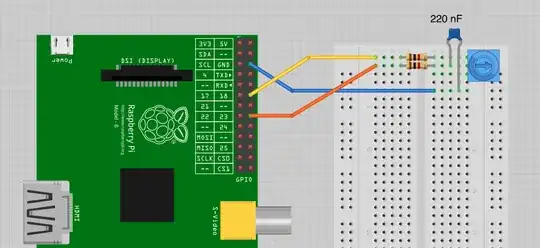Is it possible to read the signals from "simple resistor networks", as on this web site, using only the GPIO on a Raspberry 3? There are six cases with the resistance values 54 Ω, 147 Ω, 301 Ω, 562 Ω, 1037 Ω and 5057 Ω.
I imagine getting a reading a few times per second would be enough.
Addition: it is a steering wheel control stalk. It can be moved in two directions (back and forth) and has a button, so five different actions.
More addition: preferably not the "step response" technique, or any other software-based solution. I'd like to just make quick calls a few times per second to get the current value of the resistor network. I have a programming background, not electronics.
